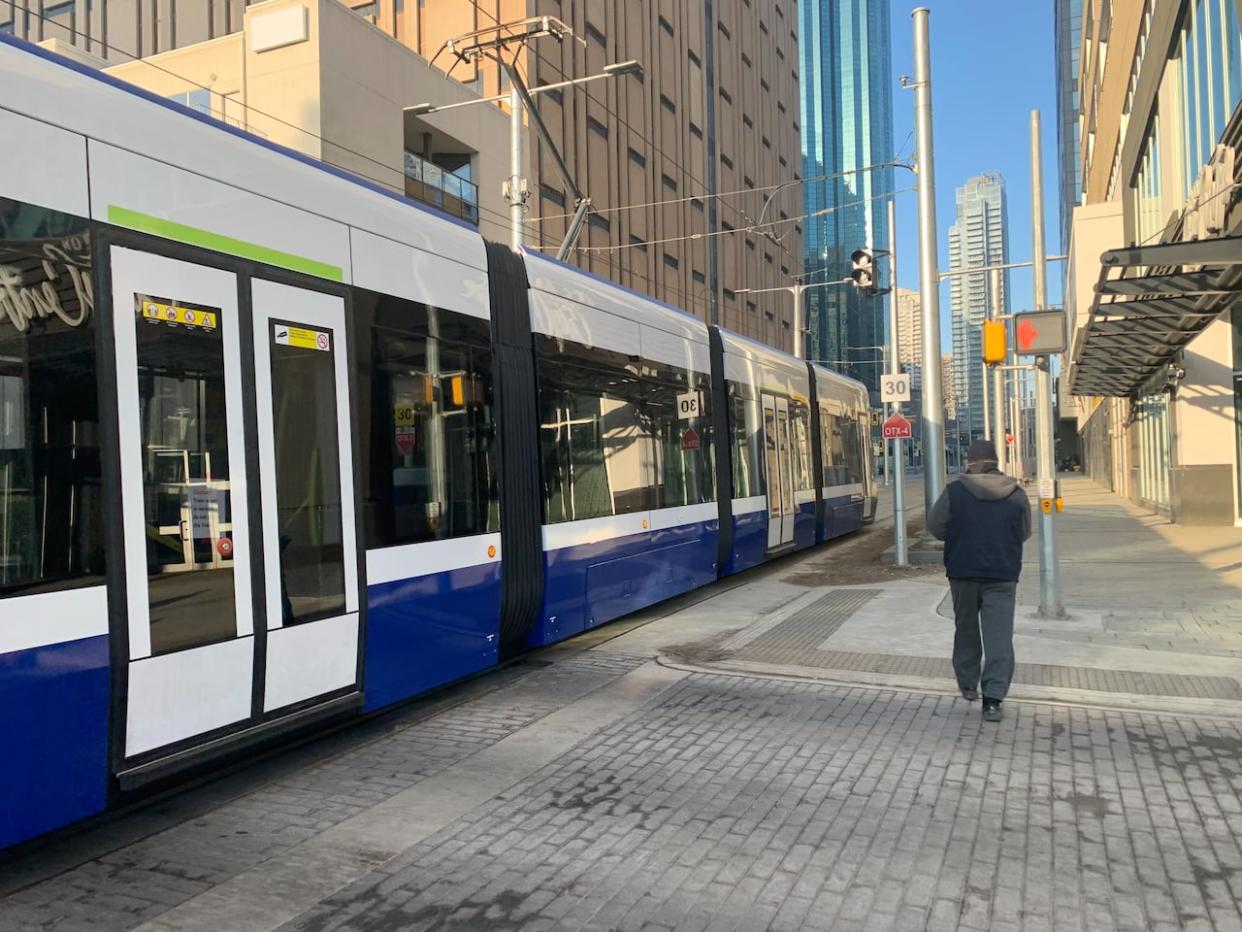Edmonton transit revenues down as LRT ridership struggles to rebound post-pandemic

- Oops!Something went wrong.Please try again later.
The City of Edmonton made millions less from public transit in 2023 than officials had expected, budget documents show.
Most of the revenue shortfall stemmed from lower than expected fare revenues. Bus ridership has bounced back from the COVID-19 pandemic, but not LRT use.
"Both on the bus and LRT side, there is a pocket of riders who are working hybrid arrangements, taking fewer trips," said Edmonton Transit Service manager Carrie Hotton-MacDonald. "That's happening around Canada."
The city's executive committee held a meeting Thursday, during which MacDonald presented an overview of fares, ridership and the status of the city's low-income pass program.
Budget documents show an overall revenue shortfall of $16.7 million, about 70 per cent which was due to less fare revenue than the budget estimated.
The city budgeted to collect $99.2 million from fares, but actually made $87.4 million — a difference of nearly $12 million.
LRT ridership, meanwhile, is 75 per cent lower than it was in 2019, Hotton-MacDonald said, adding that some people have stopped taking the train due to safety concerns.
"Late night, we see fewer trips being completed on the LRT than we did pre-pandemic," she said.
Shortfall on low-income passes
The Ride Transit Program, which offers a subsidized pass for low-income earners, cost $5.3 million more last year than what the city projected, Hotton-MacDonald said.
Riders with a monthly pass or an ARC card pay $2.75 a ride. The city previously told CBC News that demand for the program grew by 20 per cent, from 2019 to 2023.
The city expects this year's shortfall to be $10 million if nothing changes — although, city administration plans to charge $1 more for the pass starting in 2025.
Ward Dene Coun. Aaron Paquette suggested increaseing regular adult fare, as costs have been fairly static.
"I'm just wondering if Edmontonians would prefer to see a marginal increase in the base fare, rather than put it on the Ride Transit Program, for the people who need those low prices the most," Paquette said.
Under the program, a single person making $33,579 a year or less is eligible for the subsidized transit pass. A household of four, with an annual income of $62,396, is eligible.
The committee passed a motion Thursday that directs city administration to examine increasing funding to the discounted fare program, as well as potential consequences if fares and eligibility criteria were changed.
Ward Métis Coun. Ashley Salvador, who introduced the motion, told CBC News she doesn't want to introduce changes that would result in fewer people accessing the program.
"I want to ensure that this type of program is in place, helping those most in need in a manner that we can continue doing for years to come," Salvador said.
Administration is scheduled to report back to the executive committee next month with a multi-year transit funding plan.
Finding new ways to pay for transit
The city relies mainly on property taxes and fare revenues to pay for its transit system.
David Cooper, a transit planning specialist with consulting firm Leading Mobility, recommends municipalities start finding other ways to cover operating costs.
"If we buy new buses or we extend the LRT, we still have to find the money to actually pay for those services," Cooper told CBC News.
He suggests the federal government attach operating money to project it funds. The government of Canada offers money through the Permanent Public Transit Fund, but that is solely for capital costs.
Cooper also suggests Edmonton look at other jurisdictions that use vehicle levies, an off-street parking tax and additional fees on Uber trips to help pay for transit.

